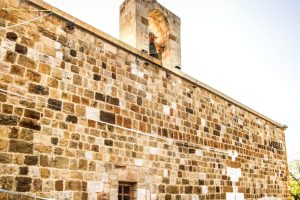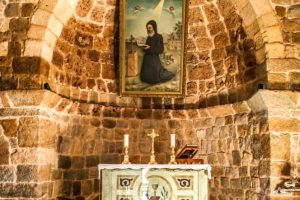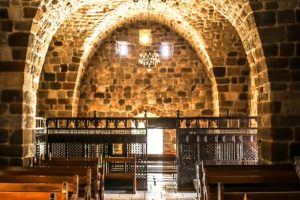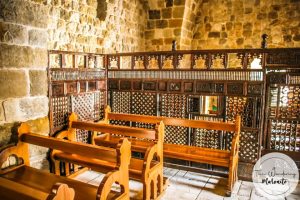Overview
Map
Other Details
كنيسة مار أوْتِل - كفرصغاب
1470
Kfarsghab
Zgharta
North
بُنيت الكنيسة أوّلاً سنة ١٤٧٠ ورُمِّمَت سنة ١٧٧٦. هي الوحيدة في الشّرق التي تحمل شفاعة هذا القدّيس. الكنيسة ما زالت تُحافظ على الشَعريّة التي تفصل أماكن جلوس الرجال عن النّساء وهي مِن صُنعٍ مِصريّ تعود للقرن الثامن عشر. مذبح الكنيسة إكتُشف إبّان الترميم الأخير مِن سنة فرمِّمَ وأُعيد لبهائه الأصليّ. لوحة مار أوْتِل تعود لسنة ١٩٠٣. مار أوْتِل هو شفيع كفرصغاب إذ حماها من داء الطاعون، لذلك تُقيم البلدة تذكارًا رسميًّا لهُ في ٣ حزيران وتذكار هذه المعجزة في ٢٧ آب. كذلك مار أوْتِل هو شفيع المسافرين وإليه ينسب حماية بعض أبناء كفرصغاب من الغرق في سفينة التيتانيك سنة ١٩١٢.The church was first built in 1470 and restored in 1776. It is the only church in the east consecrated to St Awtel. The church still conserves the traditional wooden separator between men’s and women’s sitting place, made in Egypt in the XVIIIth century. The painting of St Awtel dates back to year 1903. The old altar was discovered a year ago during restoration. Kfarsghab celebrates two feasts of the saint on the 3rd of june and the 27th of august when the saint miraculously protected the village from the plague. St Awtel is also the patron of the travelers since he miraculously protected the Kfarsghaby passengers of the Titanic in 1912.
Visited 2534 times, 12 Visits today



















Reviews are disabled, but trackbacks and pingbacks are open.